Are you curious about the spiritual heart of Vietnam? Yen Tu Mountain is not just a scenic destination; it’s a deeply significant pilgrimage site. This article, brought to you by SIXT.VN, will delve into the rich history and cultural importance of Yen Tu Mountain, exploring why it draws pilgrims and tourists alike. Discover the allure of this sacred peak and how SIXT.VN can make your journey seamless and unforgettable with our comprehensive travel services.
1. What Makes Yen Tu Mountain a Sacred Destination?
Yen Tu Mountain holds immense spiritual significance in Vietnam, primarily due to its association with Emperor Tran Nhan Tong, who abdicated his throne in 1299 to dedicate his life to Buddhism there. He founded the Truc Lam Zen Buddhism school, making Yen Tu the cradle of Vietnamese Zen Buddhism. The mountain is dotted with pagodas, temples, and shrines, each contributing to its sacred atmosphere and attracting pilgrims seeking enlightenment and peace. According to the Vietnam National Administration of Tourism, Yen Tu is one of the most important religious sites in the country, drawing visitors from all over the world.
1.1. The Legacy of Emperor Tran Nhan Tong
Emperor Tran Nhan Tong’s decision to renounce his royal life and embrace Buddhism on Yen Tu Mountain transformed the area into a spiritual epicenter. His teachings and practices formed the basis of Truc Lam Zen, which emphasizes mindfulness, simplicity, and direct experience. This legacy is deeply ingrained in the Vietnamese culture and continues to inspire countless individuals.
1.2. Architectural and Spiritual Landmarks
The mountain is home to numerous pagodas and temples, each with its own unique history and spiritual significance. Some notable landmarks include:
- Dong Pagoda (Bronze Pagoda): Perched atop the highest peak, this pagoda is a symbol of perseverance and spiritual achievement.
- Hoa Yen Pagoda: A serene temple known for its beautiful architecture and tranquil atmosphere.
- Giai Oan Pagoda: A place where Emperor Tran Nhan Tong is said to have absolved grievances, symbolizing forgiveness and reconciliation.
1.3. Natural Beauty and Spiritual Ambiance
The natural beauty of Yen Tu Mountain complements its spiritual significance. The lush forests, rugged terrain, and panoramic views create a serene and contemplative environment, ideal for meditation and reflection. The mountain’s isolation from urban centers further enhances its peaceful ambiance, making it a perfect sanctuary for spiritual seekers.
2. What is the Historical Significance of Yen Tu Mountain?
The historical importance of Yen Tu Mountain is intertwined with the Tran Dynasty and the establishment of Truc Lam Zen Buddhism. During the Tran Dynasty (1225-1400), Vietnam experienced a period of prosperity and cultural flourishing. Emperor Tran Nhan Tong’s decision to establish a Buddhist center on Yen Tu Mountain solidified its place in Vietnamese history and spirituality.
2.1. Yen Tu During the Tran Dynasty
The Tran Dynasty played a crucial role in shaping Vietnam’s identity, both politically and culturally. The emperors were patrons of the arts, literature, and religion, fostering an environment of intellectual and spiritual growth. Yen Tu Mountain became a focal point of this cultural renaissance, attracting scholars, monks, and artists who contributed to its rich heritage.
2.2. The Founding of Truc Lam Zen Buddhism
Truc Lam Zen Buddhism, founded by Emperor Tran Nhan Tong, is a unique blend of Buddhist principles and Vietnamese culture. It emphasizes the importance of self-reliance, mindfulness, and compassion. The establishment of this school of Buddhism on Yen Tu Mountain marked a significant milestone in the history of Vietnamese Buddhism.
2.3. Key Historical Events and Figures
Several key historical events and figures have shaped the history of Yen Tu Mountain. Emperor Tran Nhan Tong’s journey to the mountain, his ordination as a monk, and his teachings are central to its historical narrative. Other notable figures include prominent monks and scholars who contributed to the development of Truc Lam Zen and the preservation of Yen Tu’s cultural heritage.
3. How Does Yen Tu Mountain Reflect Vietnamese Culture and Spirituality?
Yen Tu Mountain is a microcosm of Vietnamese culture and spirituality, embodying the values of reverence, resilience, and harmony. It reflects the deep connection between the Vietnamese people and their spiritual heritage, as well as their respect for nature and tradition.
3.1. Blending of Buddhism and Vietnamese Traditions
Yen Tu Mountain exemplifies the seamless blending of Buddhism and Vietnamese traditions. The practices and rituals performed on the mountain incorporate elements of both Buddhist philosophy and local customs. This syncretism is a hallmark of Vietnamese culture, reflecting its ability to integrate diverse influences while maintaining its unique identity.
3.2. Symbolism in Architecture and Art
The architecture and art of Yen Tu Mountain are rich in symbolism, conveying profound spiritual messages. Pagodas, temples, and statues are adorned with intricate carvings and motifs that represent Buddhist concepts such as enlightenment, compassion, and impermanence. These artistic expressions serve as visual reminders of the spiritual path and the ultimate goal of liberation.
3.3. Festivals and Pilgrimage Practices
Festivals and pilgrimage practices on Yen Tu Mountain are vibrant expressions of Vietnamese culture and spirituality. The Yen Tu Festival, held annually in the spring, attracts thousands of pilgrims who come to pay homage to Emperor Tran Nhan Tong and seek blessings for the year ahead. These events are characterized by colorful processions, traditional music and dance, and heartfelt devotion.
4. What Are the Key Attractions and Activities on Yen Tu Mountain?
Yen Tu Mountain offers a variety of attractions and activities for visitors, ranging from spiritual sites and scenic viewpoints to hiking trails and cultural experiences. Whether you are a devout pilgrim, a nature lover, or a cultural enthusiast, Yen Tu Mountain has something to offer you.
4.1. Must-See Pagodas and Temples
Exploring the pagodas and temples of Yen Tu Mountain is a must for any visitor. Each site offers a unique glimpse into the history, architecture, and spiritual significance of the mountain. Some of the most popular pagodas and temples include:
- Dong Pagoda (Bronze Pagoda): Located at the summit of Yen Tu Mountain, this pagoda offers breathtaking views and a sense of spiritual accomplishment.
- Hoa Yen Pagoda: Known for its serene atmosphere and beautiful gardens, this pagoda is a perfect place for meditation and reflection.
- Giai Oan Pagoda: Legend has it that Emperor Tran Nhan Tong absolved grievances here, making it a symbol of forgiveness and reconciliation.
- Truc Lam Zen Monastery: This is the central hub for those who practice meditation and studying of Buddhism
4.2. Hiking and Nature Trails
For those who enjoy the outdoors, Yen Tu Mountain offers a network of hiking trails that wind through lush forests and rugged terrain. These trails provide opportunities to connect with nature, enjoy panoramic views, and discover hidden temples and shrines.
4.3. Cultural Experiences and Festivals
Immerse yourself in the local culture by attending festivals, participating in traditional ceremonies, and interacting with monks and pilgrims. The Yen Tu Festival, held annually in the spring, is a vibrant celebration of Vietnamese culture and spirituality, featuring colorful processions, traditional music and dance, and heartfelt devotion.
5. How Can You Plan a Pilgrimage to Yen Tu Mountain?
Planning a pilgrimage to Yen Tu Mountain requires careful consideration of logistics, accommodations, and spiritual preparation. Whether you are traveling independently or as part of a group, it is essential to plan ahead to ensure a meaningful and fulfilling experience.
5.1. Best Time to Visit
The best time to visit Yen Tu Mountain is during the dry season, from October to April, when the weather is mild and pleasant. The Yen Tu Festival, held in the spring, is a particularly popular time to visit, but be prepared for larger crowds.
5.2. Transportation Options
Getting to Yen Tu Mountain is relatively easy, with several transportation options available. You can take a bus or private car from Hanoi to Uong Bi, the town at the base of the mountain. From there, you can take a cable car or hike to the summit. SIXT.VN offers convenient and reliable transportation services, including airport transfers and private car rentals, to make your journey hassle-free.
5.3. Accommodation Choices
Yen Tu Mountain offers a range of accommodation options, from budget-friendly guesthouses to luxury resorts. The Legacy Yen Tu MGallery is a popular choice for those seeking a comfortable and convenient stay. SIXT.VN can help you find the perfect accommodation to suit your needs and budget.
5.4. Essential Tips for Pilgrims
- Dress modestly: When visiting temples and pagodas, it is important to dress respectfully, covering your shoulders and knees.
- Be mindful: Maintain a respectful and contemplative attitude while on the mountain.
- Stay hydrated: Bring plenty of water, especially if you plan to hike.
- Respect the environment: Avoid littering and stay on designated trails.
6. What is the Impact of Tourism on Yen Tu Mountain?
Tourism has both positive and negative impacts on Yen Tu Mountain. While it provides economic benefits and promotes cultural exchange, it also poses challenges to the preservation of the mountain’s natural and cultural heritage.
6.1. Economic Benefits of Tourism
Tourism generates revenue for local communities, supports businesses, and creates employment opportunities. The influx of visitors stimulates economic growth and helps improve the quality of life for residents.
6.2. Environmental Concerns
Increased tourism can lead to environmental degradation, including pollution, deforestation, and soil erosion. The construction of hotels and other infrastructure can also disrupt the natural landscape and harm wildlife habitats.
6.3. Cultural Preservation Efforts
Efforts are being made to mitigate the negative impacts of tourism and preserve Yen Tu Mountain’s cultural heritage. These include:
- Sustainable tourism practices: Promoting responsible travel behavior and encouraging businesses to adopt environmentally friendly practices.
- Cultural awareness programs: Educating visitors about the history, culture, and spiritual significance of Yen Tu Mountain.
- Community involvement: Engaging local communities in tourism planning and decision-making.
7. How Does SIXT.VN Enhance Your Trip to Yen Tu Mountain?
SIXT.VN is your trusted partner for planning a memorable and hassle-free trip to Yen Tu Mountain. We offer a range of services designed to enhance your travel experience, from transportation and accommodation to tours and activities.
7.1. Convenient Transportation Services
SIXT.VN provides convenient and reliable transportation services, including airport transfers and private car rentals, to help you get to Yen Tu Mountain with ease. Our experienced drivers and well-maintained vehicles ensure a comfortable and safe journey.
7.2. Accommodation Booking Assistance
We can help you find the perfect accommodation to suit your needs and budget, whether you are looking for a budget-friendly guesthouse or a luxury resort. Our extensive network of hotel partners allows us to offer you a wide range of options at competitive prices.
7.3. Guided Tours and Activities
SIXT.VN offers guided tours and activities that allow you to explore Yen Tu Mountain’s cultural and natural attractions with ease. Our knowledgeable guides will provide you with insights into the history, spirituality, and ecology of the mountain, making your experience more enriching and meaningful.
7.4. Personalized Travel Planning
We understand that every traveler is unique, which is why we offer personalized travel planning services. Our team of travel experts will work with you to create a customized itinerary that meets your specific interests, preferences, and budget.
8. What Are Some Lesser-Known Facts About Yen Tu Mountain?
Beyond its well-known spiritual significance, Yen Tu Mountain holds several lesser-known facts that add to its allure and mystique. Exploring these hidden gems can deepen your appreciation for this sacred site.
8.1. The Legend of the “Lost Dragon”
Local legends tell of a dragon that once resided in the mountains, its scales shimmering like gold. The dragon, disturbed by human encroachment, retreated into the depths of the earth, leaving behind only the mountain’s majestic peaks as a reminder of its presence.
8.2. The Secret Hermitages
Hidden amongst the dense forests of Yen Tu are numerous hermitages where monks and ascetics have sought solitude and enlightenment for centuries. These secluded retreats offer a glimpse into the lives of those who have dedicated themselves to spiritual practice.
8.3. The Medicinal Plants of Yen Tu
The mountain is home to a diverse array of medicinal plants, revered for their healing properties. Traditional healers have long sought these botanicals to create remedies for various ailments, adding to the mountain’s reputation as a place of both spiritual and physical well-being.
9. What Are the Ethical Considerations for Visiting Yen Tu Mountain?
When visiting Yen Tu Mountain, it’s essential to be mindful of the ethical considerations involved in pilgrimage and tourism. Respecting the local culture, environment, and spiritual practices is crucial for ensuring a positive and sustainable experience.
9.1. Respecting Sacred Spaces
When entering temples and pagodas, dress modestly, remove your shoes, and speak in hushed tones. Avoid disruptive behavior and be mindful of those who are engaged in prayer or meditation.
9.2. Supporting Local Communities
Choose locally-owned businesses and services to support the economic well-being of the communities surrounding Yen Tu Mountain. Purchase handicrafts and souvenirs directly from artisans to ensure that your money benefits the local economy.
9.3. Minimizing Environmental Impact
Practice responsible tourism by reducing your environmental footprint. Avoid littering, stay on designated trails, and conserve water and energy. Consider using eco-friendly transportation options, such as hiking or cycling, to explore the mountain.
10. FAQ About Yen Tu Mountain
Here are some frequently asked questions about Yen Tu Mountain to help you plan your visit:
10.1. Is Yen Tu Mountain suitable for all ages?
Yes, Yen Tu Mountain is suitable for all ages, although some of the hiking trails may be challenging for young children and elderly individuals. Cable car services are available to transport visitors to the summit.
10.2. Are there any entrance fees for Yen Tu Mountain?
Yes, there are entrance fees for certain attractions on Yen Tu Mountain, such as the Dong Pagoda and the Yen Tu Historical Forest.
10.3. Can I hire a guide on Yen Tu Mountain?
Yes, you can hire a guide at the base of Yen Tu Mountain to accompany you on your pilgrimage. A guide can provide valuable insights into the history, culture, and spirituality of the mountain.
10.4. Is it necessary to book accommodation in advance?
It is advisable to book accommodation in advance, especially during peak season, to ensure that you have a place to stay. SIXT.VN can help you find and book the perfect accommodation for your needs.
10.5. What should I wear when visiting Yen Tu Mountain?
When visiting Yen Tu Mountain, it is important to dress modestly, covering your shoulders and knees. Comfortable shoes are recommended for hiking.
10.6. Are there restaurants on Yen Tu Mountain?
Yes, there are restaurants and food stalls located at the base of Yen Tu Mountain and near some of the pagodas.
10.7. Can I take photos on Yen Tu Mountain?
Yes, you can take photos on Yen Tu Mountain, but be respectful of sacred spaces and avoid using flash photography inside temples and pagodas.
10.8. Is it possible to visit Yen Tu Mountain in one day?
Yes, it is possible to visit Yen Tu Mountain in one day, but it is recommended to allow at least two days to fully explore the mountain’s attractions.
10.9. What language is spoken on Yen Tu Mountain?
The primary language spoken on Yen Tu Mountain is Vietnamese. English is spoken by some of the staff at hotels and tourist information centers.
10.10. Is Yen Tu Mountain wheelchair accessible?
Some parts of Yen Tu Mountain are wheelchair accessible, but many of the hiking trails and temples are not. Cable car services are available to transport visitors to the summit.
Yen Tu Mountain is more than just a destination; it’s a journey into the heart of Vietnamese spirituality and culture. Let SIXT.VN be your guide, ensuring a seamless and enriching pilgrimage experience. Contact us today at +84 986 244 358 or visit our website SIXT.VN to start planning your unforgettable adventure. Our address is 260 Cau Giay, Hanoi, Vietnam. Discover the sacred allure of Yen Tu Mountain with SIXT.VN, where every journey is a story waiting to be told.
 Reception-1024×768
Reception-1024×768
The elegant reception area of a modern resort complex near Yen Tu Mountain, reflecting Vietnamese architectural influences
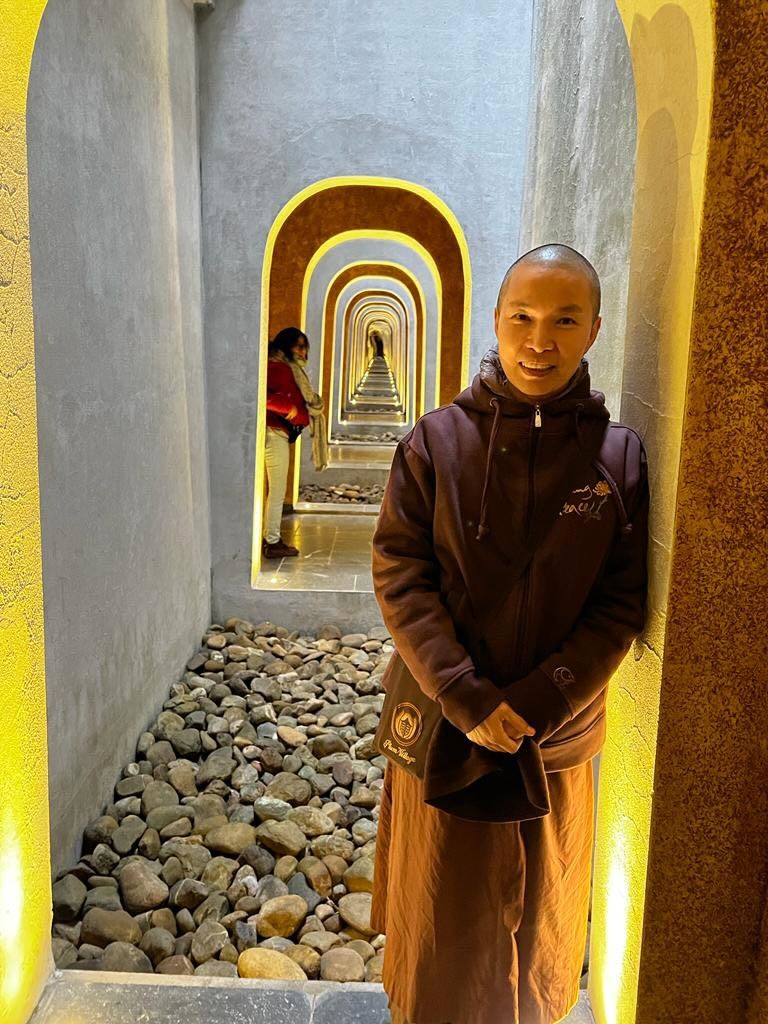 Tue-Nghiem
Tue-Nghiem
A monk standing beside a corridor lined with guest rooms, highlighting the blend of spirituality and accommodation
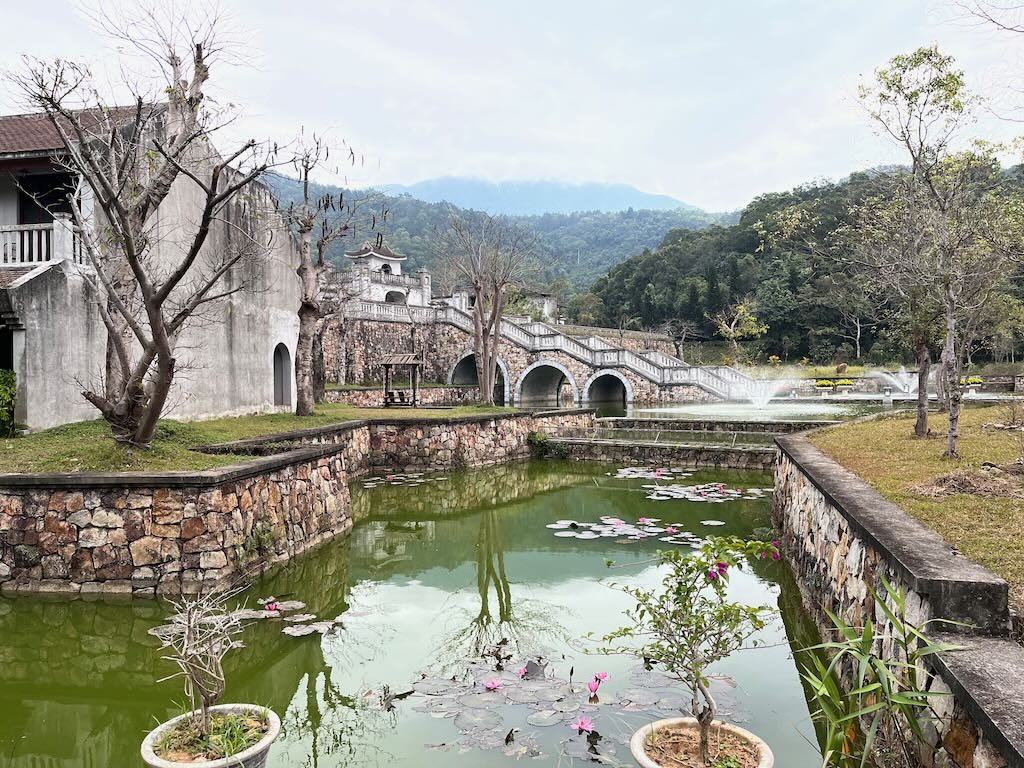 Canal
Canal
Scenic view from a “town” area towards a modern hotel, showing traditional Vietnamese architecture
 IMG_8868-768×1024
IMG_8868-768×1024
Distant view of Yen Tu Mountain from a resort complex, inviting exploration of its rugged terrain and spiritual sites
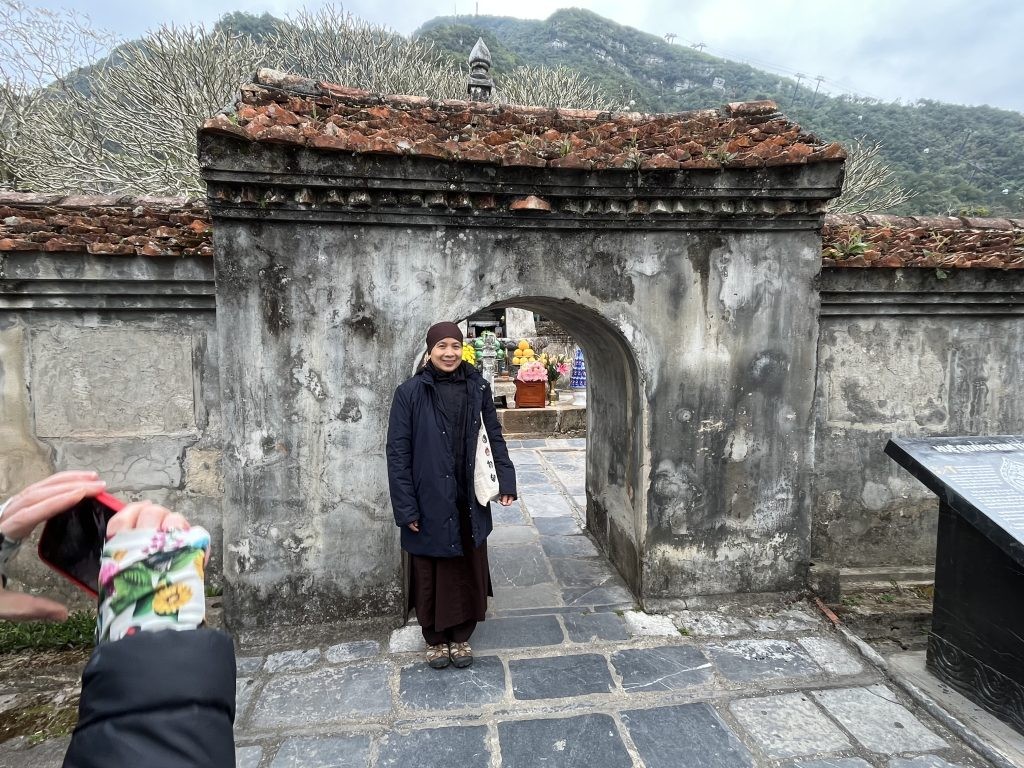 Monument-1024×768
Monument-1024×768
A monk standing outside the Hue Quang Golden Stupa on Yen Tu Mountain, a relic of Tran Nhan Tong
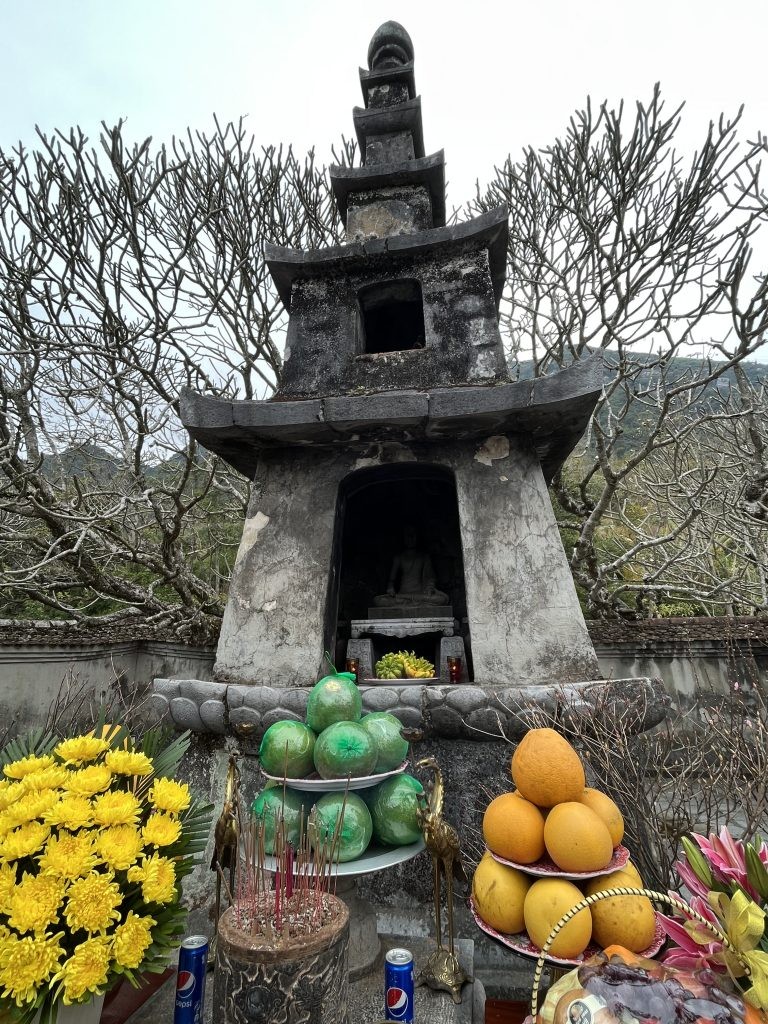 Statue-768×1024
Statue-768×1024
Close-up of the Hue Quang Golden Stupa, a significant religious monument
 Song-768×1024
Song-768×1024
A group singing on top of Yen Tu Mountain, sharing a moment of spiritual connection
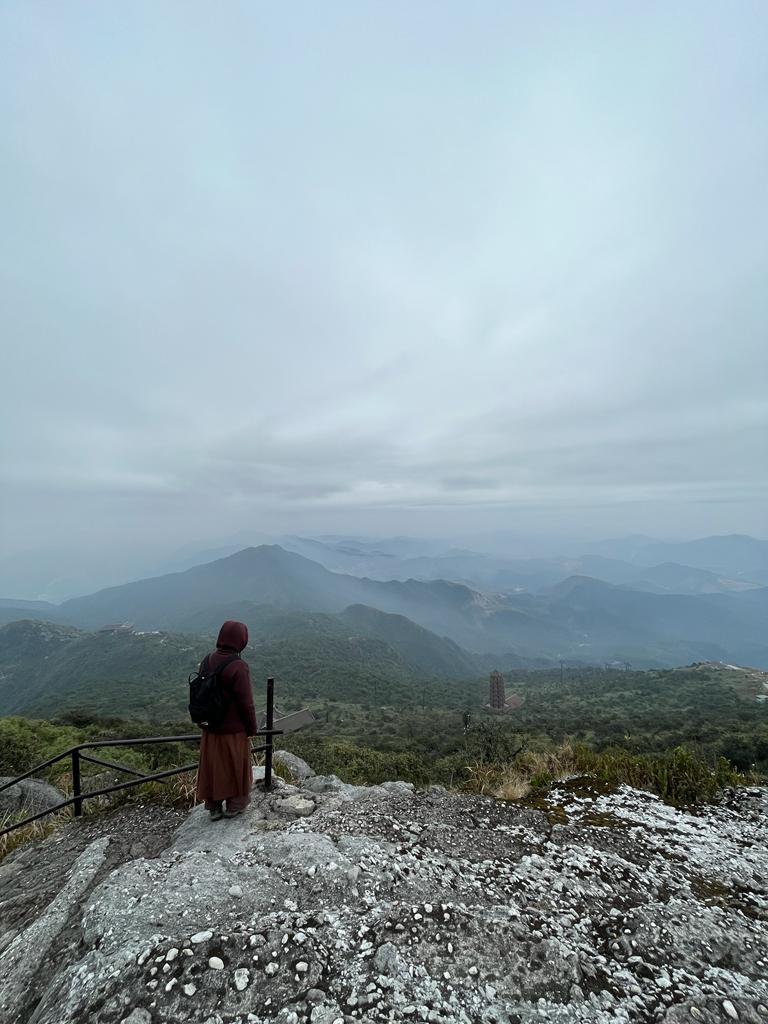 Phuc-View
Phuc-View
Panoramic view from the summit of Yen Tu Mountain, showing the vast landscape below



